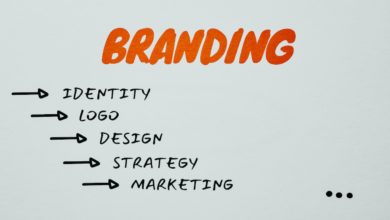Effective Employer Branding to Catch the Right Talent

In a corporate recruitment and talent acquisition arena, too many companies adhere to an outdated strategy, seemingly entranced by the concept of “more equals better.” You can picture it: Businesses flaunting their impressive perks and sparkling benefits, akin to a tantalizing corporate Tinder profile, luring in swathes of candidates. But here’s the reality check — not every swiping right leads to a successful match, and most certainly, not every candidate who walks through your door can be hired.
Multiple studies underscore this stark truth. In a 2019 report by Glassdoor, companies that overemphasize volume recruitment strategies are more likely to incur financial losses due to long-term employee disengagement and high turnover rates. Likewise, a study by Deloitte affirms that businesses with an indiscriminate recruitment strategy have a 25% higher attrition rate compared to companies that invest in targeted recruitment.
So, how do we reframe the narrative? According to Bryan and several HR experts, it’s high time for businesses to think of employer branding as a discerning filter, rather than a broad net. Instead of inviting an avalanche of applications, the goal is to create a dichotomy — attracting the right talent, while gently deterring those who are not an ideal fit.
A study published in the Journal of Brand Management in 2020 revealed that providing transparent and accurate information about the company and job positions can significantly reduce the number of unqualified or misaligned applicants, by up to 50%. As Bryan asserts, an optimal candidate experience is often rooted in offering them the necessary insight to make an informed choice, even if it means deciding not to apply at all.
Shaping a robust employer brand requires a thorough understanding of your organization’s inner workings, its key drivers, and the capabilities necessary for its growth. Such deep insights can be sculpted into a brand message that resonates with the right audience, thereby achieving an effective brand strategy. Remember, the challenges and hardships that shape your employees’ experiences are just as pivotal to your branding as the triumphs.
The Corporate Executive Board (CEB) report reinforces this point, stating that businesses who candidly communicate about both the positive and negative aspects of a role see a 50% increase in the quality of candidates applying. So, let’s take heed and reshape our employer branding strategies. After all, it’s not just about the number of fish you catch; it’s about catching the right one.
A potent employer branding strategy doesn’t materialize in a vacuum. It takes concerted effort and a multi-faceted approach to distil a company’s essence into a compelling brand image. Here’s the triadic framework that research and empirical data suggest as the bedrock of an effective strategy:
- Leadership Lens: Engage in insightful dialogue with the company’s decision-makers. What does the roadmap to success look like? Are there stumbling blocks on the path? What accomplishments are worth emulating, and what ideals form the company’s cornerstone? It’s about envisioning the connective tissue bridging today’s reality with tomorrow’s aspirations. A 2020 study from the Harvard Business Review posits that companies with a clearly defined, leadership-endorsed brand vision experience 33% more alignment between their employer brand and the lived employee experience.
- Employee Echo: Equally important is the voice echoing from the company’s trenches—the employees. Gathering their perspectives, understanding their experiences, their triumphs, trials, and their mundane day-to-day can offer invaluable insights. According to a survey by LinkedIn, companies that incorporate employee feedback into their branding strategy observe a 20% increase in employee satisfaction and a correlating boost in candidate appeal.
- Market Mirror: Lastly, understanding the competitive landscape is key. What sets your company apart from the crowd? A survey by CareerBuilder indicates that 64% of job seekers consider a distinctive employer brand as the determining factor in their job application decision.
By adopting this tri-focal approach, businesses can ensure they cast an accurate reflection of their company, align their branding strategy with the market’s needs, and foster a more compelling and authentic employer brand.
As the adage goes, it takes two to tango. And in the world of employer branding, this dance involves not only the C-suite but also the hiring managers and recruiters—the frontline of the hiring process. Their viewpoint offers invaluable insights into the competitive landscape from the unique perspectives of both candidates and employees. As a 2019 report from Glassdoor highlights, 92% of hiring managers believe that their input significantly enhances the potency of the employer brand.
Yet, the journey of developing an impactful employer branding strategy often encounters resistance, specifically when trying to harmonize the realities of the present with the aspirations for the future.
Take, for instance, an organization with a commendable culture, characterized by politeness and decorum. However, this excess of courtesy became a roadblock, stalling progress by discouraging open and honest feedback. Here’s where a shift in strategy was necessary. The introduction of “radical candor” as a key pillar of their Employee Value Proposition (EVP) became a game-changer. This new approach, recommended by Kim Scott’s best-selling book “Radical Candor,” paved the way for constructive criticism, facilitating growth, and innovation. A study by HR Technologist supports this anecdote, revealing that companies fostering open communication experience a 27% reduction in turnover and a notable increase in overall employee engagement.
It’s all about striking a balance—acknowledging the present reality while also painting a vivid picture of the envisioned future. This two-fold approach lends authenticity to the employer brand, making it a beacon for both current employees and potential hires.
In employer branding strategy, one thread often remains overlooked – the candidate experience, especially when it pertains to the seamlessness of progression through the recruitment funnel. The judicious introduction of evaluative hurdles such as skill assessments or trial tasks can prove beneficial, serving to distil the talent pool to its essence. But beware: there exists a precarious equilibrium between rigor and dissuasion.
One might disregard the duration of the application process as inconsequential, but research begs to differ. According to a 2018 study by Indeed, when an application process surpasses the five-minute threshold, there is a significant 15% candidate drop-off for every subsequent minute. Moreover, a Talent Board study echoes this sentiment with a rather startling revelation: nearly 60% of candidates would outright abandon the application process if obliged to create an account beforehand.
The moral of the story is straightforward: to appeal to top talent, your application process needs to be as user-friendly as possible. By ensuring your recruitment process is concise and straightforward, you not only enhance the overall candidate experience but also bolster your employer brand. Complexity is the adversary you need to vanquish. In an era where convenience is king, streamlining, simplification, and accessibility should be your recruitment process’s crown jewels.
The outdated, broad-brush approach is losing its appeal, and the need for a more nuanced, brand-centered method is coming to the fore.
Firms are now urged to shape a discerning, yet inclusive filter through effective employer branding. The contemporary candidate seeks transparency and authenticity; thus, businesses should not shy away from communicating both the triumphs and the trials of their company. This openness not only draws candidates who align with the company’s ethos but also gently dissuades those who may struggle to fit in.
To craft a truly compelling employer brand, employers are advised to adopt a multifaceted approach. This includes engaging in meaningful discourse with industry leaders, absorbing feedback from the existing workforce, and staying abreast of the competitive landscape. This strategy shapes an employer brand that is both persuasive and genuinely reflective of the company’s identity.
Embracing open communication, envisioning the future while acknowledging the present, and streamlining the recruitment process are key to providing an impeccable candidate experience.
The art of successful recruitment isn’t about indiscriminately casting a wide net—it’s about strategically catching the right talent that aligns with your organization’s goals and values. In the hunt for talent, it is clear that quality trumps quantity, a fact employers must remember as they navigate the intricate waters of talent acquisition.




